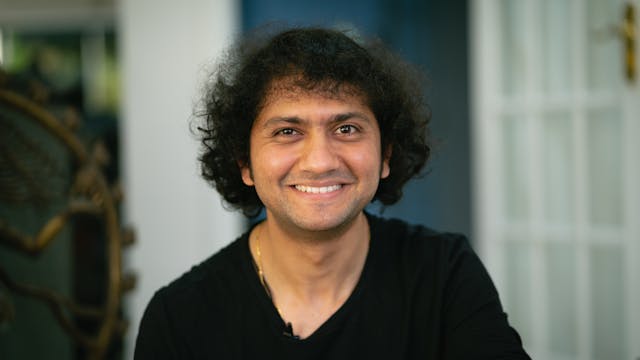TV S1 EP5 Bhupinder Chaggar
Percussion
•
58m
Bhupinder Chaggar plays a dynamic teentaal table solo in the Benares style with Ajoy Joglekar keeping the nagma on the harmonium. He learnt his art from Pandit Sharda Sahai (1935 - 2011) who is the direct descendant of Pandit Ram Sahai (1780–1826) the founder of this unique gharana. Chaggar has made a solid place for himself both as a traditional and cross-over artist in the UK and Europe.
Bhupinder Chaggar (tabla)
Ajay Joglekar (harmonium nagma)
Gunwant Kaur (tanpura)
The Benares tabla gharana was developed a little over 200 years ago by Pandit Ram Sahai (1780–1826). At the age of nine, Ram moved to Lucknow to become a disciple of Modhu Khan of the Lucknow gharana.
After some time performing in Benares, Pandit Ram Sahai felt the need to make a significant change in his tabla playing. For six months, he withdrew into seclusion, and worked to develop what is now known as the Benares baj or style of tabla playing. The philosophy behind this new style of tabla playing is that it would be versatile enough to perform solo, and to accompany any form of music or dance. The tabla would be able to play delicately, as required for khyal, or more aggressively, like pakhawaj, for the accompaniment of dhrupad or kathak dance. Ram Sahai developed a new way of fingering the tabla strokes; especially important is the sound Na, being played with a curved ring finger to allow for maximum resonance of the dahina. He also composed numerous compositions within existing compositional forms (gats, tukras, fard, parans etc.) and created new forms, such as uthan, Benarasi theka, and fard.
Up Next in Percussion
-
Ojas Adhiya - Cutting Chai
It's a rare opportunity to sit down with some of India's legendary musicians and talk about their journey and what inspires them.
In this conversation, we talk to Ojas Adhiya

